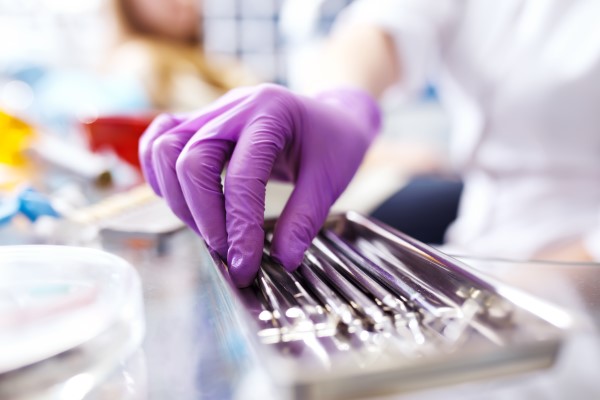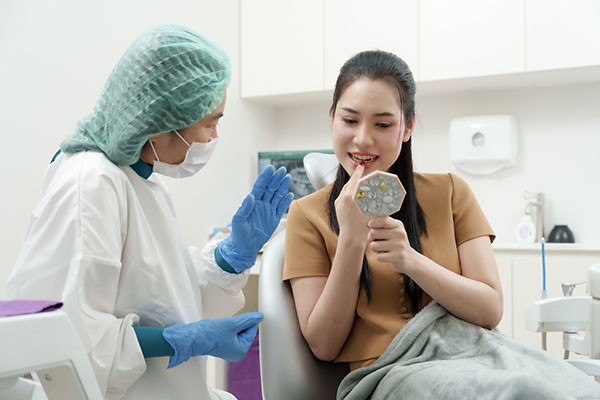Foods To Avoid After a Tooth Extraction
may be necessary for several reasons: Extensive decay, infection, and overcrowding are all common examples of why a tooth might need to be removed. The procedure can be quite painful, and healing time can vary between patients. Certain foods can aggravate an incision site, possibly leading to infection or injury. Discuss what foods are suitable to eat after extraction surgery with a dental professional when scheduling the procedure.
Steer clear of these 6 foods after a tooth extraction
One of the key components of a successful recovery after having a tooth extracted is avoiding any foods that could cause pain or slow healing. For most patients, that means avoiding these six common types of food items.
1. Hard vegetables or fruits
Very hard fruits and vegetables — things like apples, broccoli, and carrots — can cause severe pain after tooth extraction. Chewing them requires a considerable amount of pressure, which can irritate sensitive and swollen gums. Small, sharp pieces can also poke into the incision site and disrupt healing.
2. Anything that requires a straw
While many dentists and oral surgeons recommend liquids and soft foods, like smoothies, for the first few days after surgery, straws should not be used to drink them. The suction necessary to draw fluids through a straw can dislodge blood clots forming over the incision and cause bleeding. It also causes the area to be open longer, increasing the chances of an infection forming.
3. Foods that have a spicy kick to them
Many spicy foods cause a burning sensation inside the mouth under normal circumstances. The situation inside of a mouth that has just had a tooth removed is far from normal. If a food item would typically cause mild burning, the feeling will likely be more intense with an open wound present.
4. Foods that require a lot of chewing
Tooth extraction can leave the jaw inflamed and sensitive. Very chewy foods like candies, steak, or jerky require serious jaw power to process. Waiting at least a few days after having a tooth removed will give the jaw time to heal and recover before being put back to work.
5. Highly acidic foods
Much like lemon juice in a paper cut causes a surprising amount of pain, highly acidic foods will cause a burning sensation on an extraction site. In addition to being uncomfortable, these foods can also cause general irritation of mouth surfaces that slows down overall healing.
6. Hard foods like nuts and popcorn
In addition to being difficult to chew, hard foods like nuts and popcorn are also notorious for leaving small bits between teeth. A little piece of food could easily get lodged into the open area, causing infection of gums and possibly the jaw. They should be avoided until the incision is fully healed.
Conclusion
There are many reasons you may need to undergo a tooth extraction. Knowing what foods to avoid after the procedure will facilitate healing and increase comfort. Talk to a dental professional to learn more about what types of foods are and are not safe to eat after having a tooth removed.
Request an appointment here: https://www.sacramentosleepdentist.com or call Dental Excellence of Greenhaven at (916) 293-0504 for an appointment in our Sacramento office.
Check out what others are saying about our dental services on Google: .
Recent Posts
Wondering how important tooth extraction recovery is after having one or more teeth extracted from your mouth? Recovery is an essential part of successful extraction. Whether you already know that you need to have a tooth extracted or you simply think you do, understanding what is involved throughout the entire process is necessary. Preparing for…
If you are missing teeth, you know how difficult it can be both aesthetically and from a health standpoint. It is difficult to live without teeth, but there are ways to fill in these gaps. Your dentist can present a few options for replacing them and restoring your smile and the function of your mouth.…
Worried about dental emergencies and what you should do if one occurs? Continue reading to find out more. Dental emergencies can be frightening, especially when they involve a broken tooth. However, it is important to know that modern-day dentistry has allowed for the evolution of a lot of different treatments to address and treat dental…
A cracked tooth may be a dental emergency if certain more severe symptoms develop. Although not every cracked tooth requires immediate attention, it is important to understand the more serious symptoms that indicate a cracked tooth is a dental emergency and requires prompt care.If your cracked tooth causes a high level of discomfort or increases…


